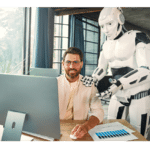Big name, technology-leading companies are known for having innovation labs: dedicated spaces where some of the industry’s best minds are pulled together to create the next major advancement in their field.
Innovation labs do have some extraordinary advantages: they’re well-stocked with the significant resources and expertise to make remarkable things. But without the organic, iterative process of development, these labs can allow “Franken-spiration” to breed bad technology.
By bad technology, I’m not referring to functionality—I’m talking about the technology’s purpose. There is a chasm of usefulness between creating technology for technology’s sake, and technology that is truly innovative.
Innovation should, at its core, drive improvement by way of increased efficiency.
So why can’t innovation come out of a controlled, focused environment like an innovation lab that’s dedicated to generating The Next Great Thing? It’s because that’s exactly what’s missing from a lab: a true environment.
Innovation happens best in a dynamic atmosphere where problem-solving is reached through an iterative, group-driven process.
Our developers at 303 Software practice an adaptive, collaborative approach because we find it is in that space where innovation truly happens. In any given project, we rely upon the build-measure-learn cycle and its intrinsic feedback loop to nimbly adjust to changes in requirement and the needs of our client as they evolve.
By using a method of development that’s more spherical than linear, we have the freedom to reevaluate and re-focus our assumptions and output at a swift pace. And in this plasticity, we often find unexpected solutions, either for the matter at hand or a challenge that hasn’t materialized yet.
To this end, 303 Software fosters a dedicated environment designed specifically for collaborative, flexible development. Our team solves problems together, in our office, as a group of experts who can jump on and off the development process depending on its stage and needs.
That’s why I’m a proponent of teams working together onsite. Remote development can work when everyone has their marching orders, but sharing space with someone creates an opportunity for better communication and understanding that I believe you can only get in person.
Our bottom line is delivering superior solutions to answer our clients’ unique challenges. I live for that “A-ha!” moment—not ours, but the one our clients experience when we provide for them a solution they may not have even realized was possible.
If collaboration and iteration are the keys to true innovation, it may be that innovation labs are too sterile to support an atmosphere that allows for problem-solving that is both truly creative and relevant.
And how do you know when you’ve hit upon a solution that’s truly innovative? I suggest you ask yourself:
- Does your solution meet a real need?
- Does it make existing processes less complicated in doing so?
- Are you the one saying “A-ha!”—or is it your client?
- Will others want to repeat your solution, but have a difficult time replicating it?
That last point is worth a blog post in and of itself: creating high barriers of entry for replication is a hallmark of a leading solution. If you’d like to talk about this and ways you can combine proven technology, collaborative methodology, and collective expertise to develop distinctive solutions, send us an email at helloworld@303software.com. We’d love to chat.






